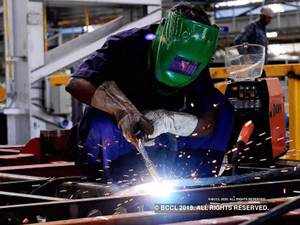
The industry has flagged other pain points, including allowing only 40% of machinery shifted from other countries to India to be recognised to calculate the eligibility under the scheme.

COVID-19 CASES
WorldIndiaConfirmed2,069Deaths53Confirmed932,605Deaths46,809The Department of Revenue and the handset industry, backed by the IT ministry, are at odds over the implementation of the much-touted Rs 41,000-crore production-linked incentive scheme to boost local manufacturing and exports. The revenue department wants a budgetary allocation of the incentive. But the industry fears that such a mechanism will delay payments, and instead is pushing for an ‘offset’ mechanism, at least for the exports component.
“The (outgoing) Merchandise Exports Incentive Scheme (MEIS) was a duty credit scrip. These scrips were automatically linked to exports, once exports were recognised the scrip was generated and credited to your account… smooth and instant,” said an executive of a global supply chain company, who didn’t wish to be named.
But Wednesday’s notification of the PLI scheme, which will be applicable from August 1, puts in place a mechanism which essentially means a cash payment after verifying the documents, a mechanism the industry says could really delay or stall payments.
In addition to the PLI scheme, the government on Wednesday also notified two other electronic manufacturing schemes worth a total of Rs 48,000 crore. The PLI scheme aims to make India an electronic manufacturing hub by extending a 4%-6% incentive on incremental sales on mobile phones and specified electronic components such as printed circuit boards, photopolymer films and assembly, testing, marking and packaging units, among others.
“While we are comfortable with the budgetary mechanism for domestic components, for exports, this case by case basis will be a very arduous procedure and our experience with M-SIPs has made us realize that it is better to get the instantly generated scrips instead of the government writing us cheques,” said Pankaj Mohindroo, chairman of India Cellular & Electronics Association (ICEA).
The industry body represents a bulk of smartphone manufacturers in the country including Apple, Lava, Foxconn, Vivo and Oppo.
The industry has flagged other pain points, including allowing only 40% of machinery shifted from other countries to India to be recognised to calculate the eligibility under the scheme.
“Most of the additional investment into India will be relocation of factories from other countries… Hence, the entire value of the machinery should be considered while evaluating eligibility,” Mohindroo said.
He added that the clause on empowered panel being vested with powers to unilaterally change the rules won’t infuse confidence among investors, who are looking to inject billions of dollars into India. “It is only fair that investors get to be consulted,” Mohindroo added.
Source: indiatimes.com

